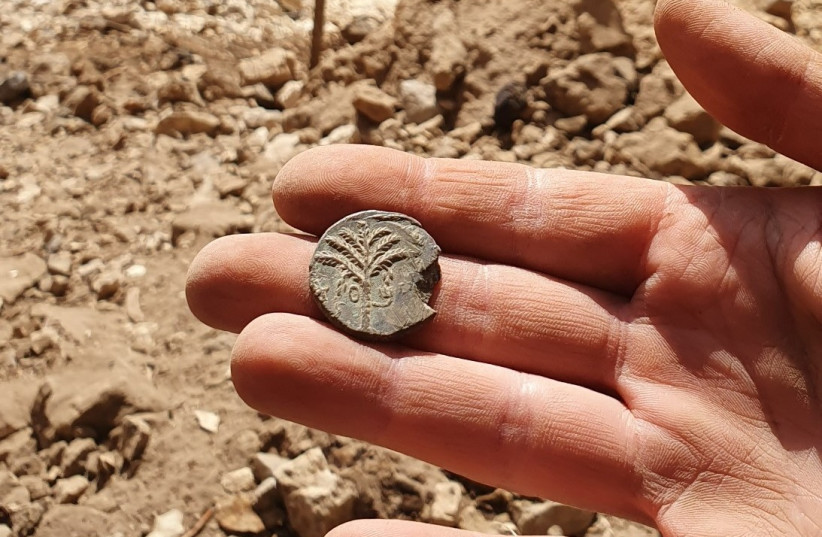Israeli gov’t to protect archaeological sites in West Bank Area C
The government is slated to approve Monday a plan to fund, develop and protect ancient Jewish archaeological sites in Area C of the West Bank just prior to President Isaac Herzog’s visit to Washington DC.
The initiative comes amid increased tensions with the Biden administration including over Israeli settlement activity as well as any other actions that strengthen Israel’s control over the West Bank.
There are over 3,000 antiquity sites in the West Bank, of which some 80% are in Area C, a region under Israeli military and civilian control.
“The region of Judea and Samaria is of significant international and national historical and archeological importance,” the Prime Minister’s Office said.
Scant resources have been placed to maintain or preserve most of those sites, leaving many of them vulnerable to robbery and vandalism as well as natural decay.
 A coin from the Bar Kochba revolt found during an archaeological dig in Murabba’at caves in the Nahal Darga Reserve in the Judean Desert. (credit: COURTESY OF IAA ROBBERY PREVENTION UNIT)
A coin from the Bar Kochba revolt found during an archaeological dig in Murabba’at caves in the Nahal Darga Reserve in the Judean Desert. (credit: COURTESY OF IAA ROBBERY PREVENTION UNIT)“In the last years, we have witnessed increasing damage to archeological sites in Judea and Samaria as a result of antiquities theft, illegal construction at the archaeological sites and a deliberate policy by those who are hostile to the State of Israel,” the PM said in the material it handed out prior to the discussion.
“Some 1,000 sites have already been damaged,” the PMO said.
The argument of how best to handle the archeological heritage in the West Bank has been inter-spliced with the Israeli-Palestinian conflict.
How do Israelis consider archaeology in the West Bank?
The government and the Right have warned that Palestinians are destroying the sites to erase the link between Jews and the biblical heartland. Among the organization that has campaigned for government action has been the NGO Regavim and the archeological group Shomrim Al HaNetzach.
The Left, in contact, has charged that preservation plans have become yet another ploy to prevent Palestinian access to land and to create a situation of de-facto annexation by extending the authority of Israeli ministries into the West Bank.
The plan itself is an extension of the 2010 National Heritage Project to preserve sites of cultural, religious and historical significance which included two sites in Judea and Samaria, the Tomb of the Patriarchs in Hebron and Rachel’s Tomb in Bethlehem.
The new drive will prioritize significant archaeological sites such as the remnant of the palaces of the Maccabean High Priest Yohanan, also known as John Hyrcanus, and his son Alexander, which became King Herod’s winter palace.
The remnant of those ancient structures is located on the outskirts of the Palestinian city of Jericho in the Jordan Valley. But the only existing access route is located in Area A of the West Bank, which is under the control of the Palestinian Authority.
The initiative instructs experts to design an alternative access route to the site.





Comments are closed.